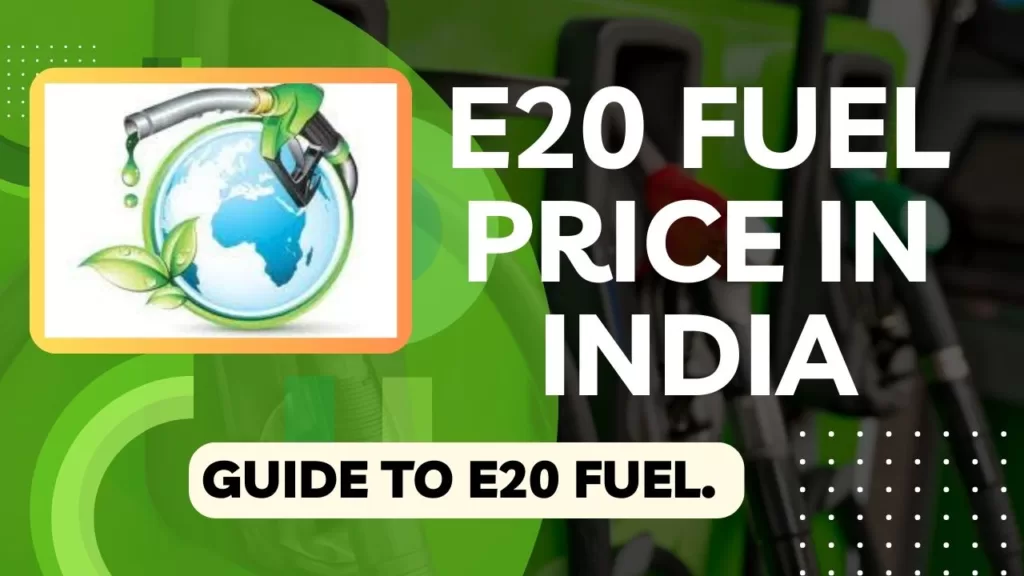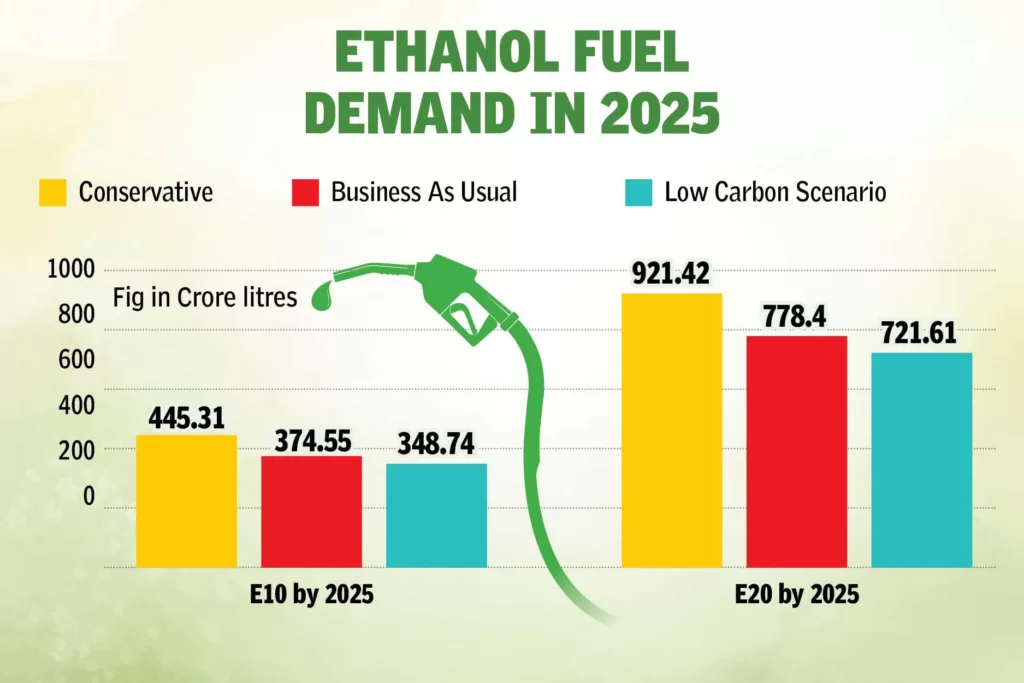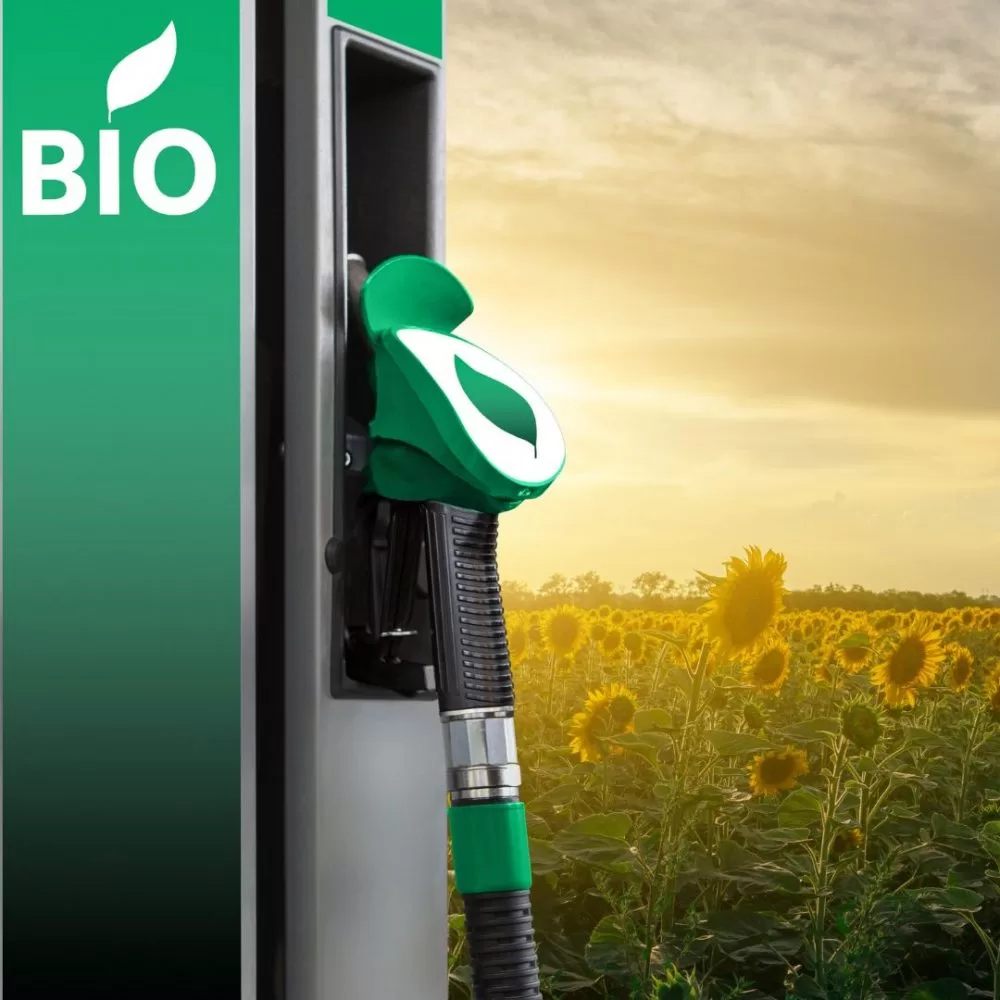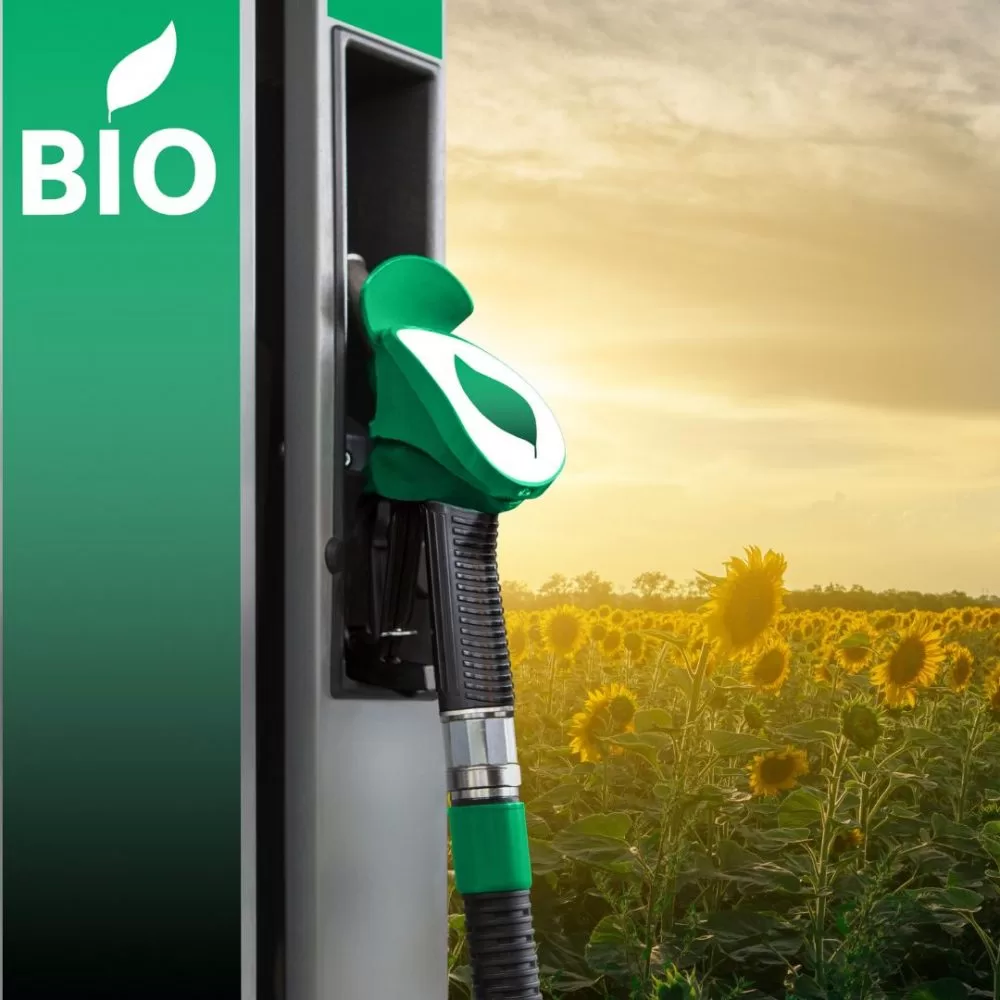In recent years, there has been a growing interest in alternative fuels as we strive to reduce our dependence on fossil fuels and minimize our impact on the environment. One such fuel that has gained significant attention is E20 fuel. In this comprehensive guide, we will delve into the world of E20 fuel, exploring its composition, benefits, drawbacks, and its potential role in a sustainable energy future.

e20 Fuel Price in India:
In India, the anticipated price of E20 petrol is projected to be slightly higher than that of regular petrol. To ensure affordability for consumers, the government is implementing subsidies. Presently, the price of e20 fuel price in india stands at approximately Rs. 60 per liter. This ethanol-blended fuel aims to strike a balance between cost-effectiveness and environmental considerations by reducing reliance on fossil fuels and promoting a cleaner energy alternative.
E20 here means that 1 litre of Petrol contains 800 ml of petrol and 200 ml of ethanol, which converts to 20% of the overall percentage. This fuel is also known as flex fuel. We have provided a dedicated article that offers comprehensive information about the Toyota Corolla Altis Flex Fuel Car, further details, we recommend referring to our article.
e20 fuel vehicles:
There aren’t many cars on Indian roads right now that can handle an E20 petrol mix. Examples include the Creta, Venue, and Alcazar SUVs from Hyundai Motor India, all of which are said to be able to operate on e20 petrol as of the 2023 MY model year.
Most modern vehicles, particularly flex-fuel vehicles (FFVs), are compatible with E20 fuel. FFVs are designed to operate on various ethanol-gasoline blends, including E20. However, it is essential to check the vehicle’s manufacturer recommendations or consult with an automotive professional to ensure compatibility before using E20 fuel.
The Ultimate Guide to e20 Fuel:
What is E20 Fuel?
E20 fuel is an ethanol blend that consists of 20% ethanol and 80% gasoline. It is considered a biofuel as it is primarily derived from renewable sources such as corn, sugarcane, or other biomass materials. E20 fuel is part of a broader range of ethanol-gasoline blends and is gaining attention due to its potential environmental and economic benefits.
Composition of E20 Fuel:
E20 fuel contains 20% ethanol, which is a bio alcohol produced through the fermentation of plant materials. The remaining 80% is gasoline, typically derived from crude oil. The ethanol component in E20 fuel contributes to its cleaner-burning properties, reducing greenhouse gas emissions and

Advantages of E20 Fuel:

Reduced Emissions:
E20 fuel offers lower carbon monoxide and particulate matter emissions compared to conventional gasoline, contributing to improved air quality and reduced environmental impact.
Renewable Energy Source:
As a biofuel, E20 fuel relies on renewable biomass sources, reducing reliance on finite fossil fuel reserves and promoting sustainable energy production.
Domestic Production:
E20 fuel production encourages local agriculture and reduces dependence on foreign oil imports, enhancing energy security.
Engine Performance:
E20 fuel has a high octane rating, which can result in improved engine performance and efficiency in vehicles specifically designed to run on higher ethanol blends.
Job Creation:
The production and distribution of E20 fuel create employment opportunities in the agricultural and energy sectors, contributing to economic growth.
Disadvantages of E20 Fuel:

Lower Energy Density:
Ethanol contains less energy per unit volume compared to gasoline, resulting in slightly reduced fuel efficiency in vehicles using E20 fuel.
Compatibility Issues:
Some older vehicles and small engines may not be compatible with E20 fuel, requiring modifications or alternative fuel options.
Infrastructure Requirements:
Widespread adoption of E20 fuel would necessitate the development of an extensive distribution infrastructure, including fueling stations and storage facilities.
Potential Corn Diversion:
Increased demand for corn as a raw material for ethanol production may impact food prices and lead to concerns about potential corn diversion from food to fuel production.
E20 Fuel vs. Other Ethanol Blends
E20 fuel is part of a spectrum of ethanol-gasoline blends. Here’s how it compares to other commonly used blends:
– E10 Fuel: Contains 10% ethanol and 90% gasoline, widely available and compatible with most vehicles.
– E15 Fuel: Contains 15% ethanol and 85% gasoline, gaining popularity but limited availability and compatibility.
– E85 Fuel: Contains 85% ethanol and 15% gasoline, primarily used in flex-fuel vehicles and offers high octane rating but limited availability.
Government policies play a crucial role in driving the adoption and production of E20 fuel. Some governments provide incentives, tax credits, and subsidies to promote ethanol production and encourage its use in transportation. Policy frameworks focusing on renewable energy targets and reducing greenhouse gas emissions can further stimulate the growth of E20 fuel.







1 thought on “2023| e20 Fuel Price in India :Guide to e20 Fuel.”